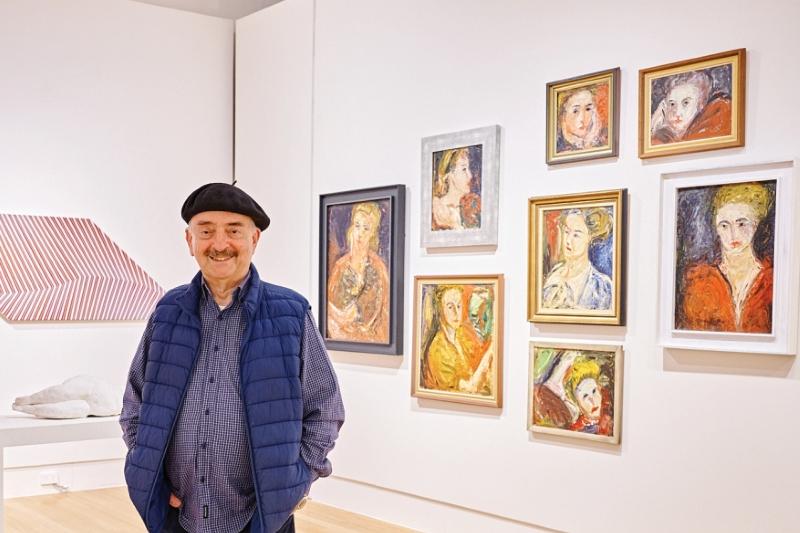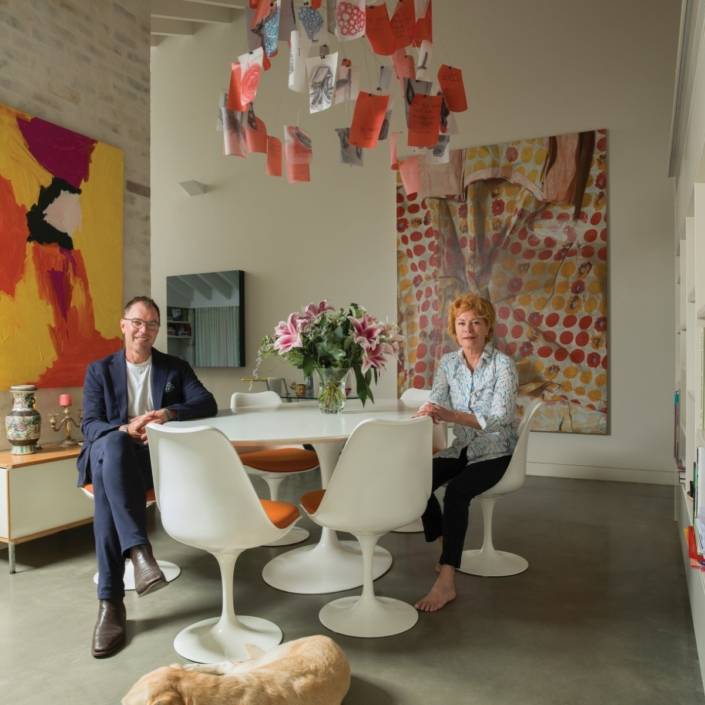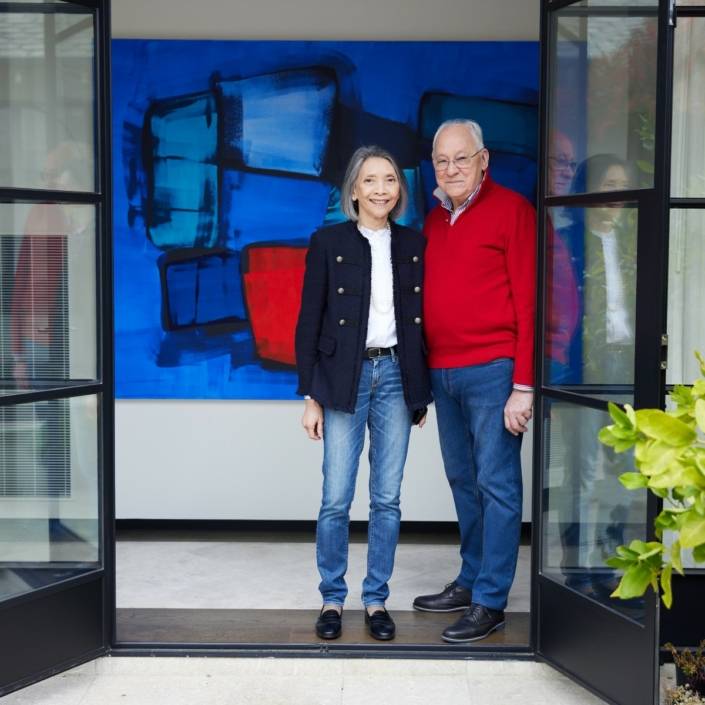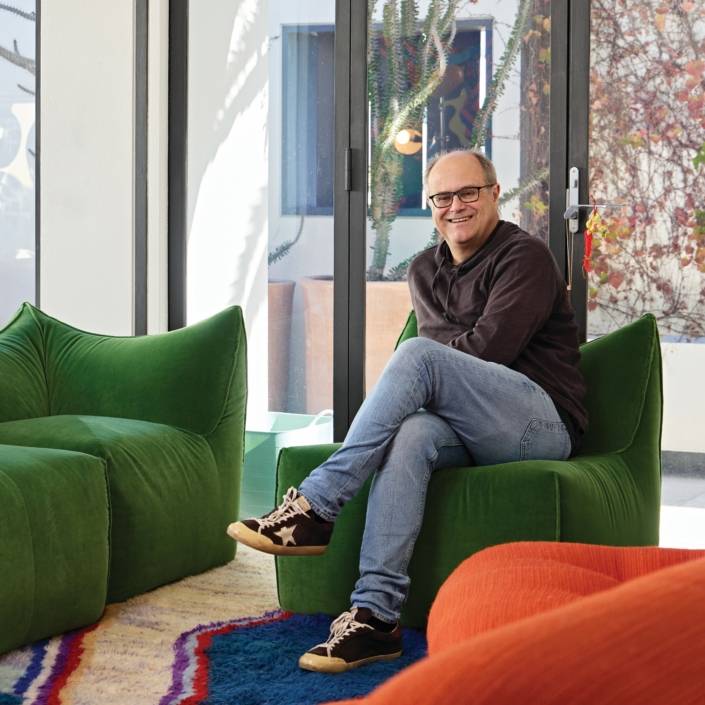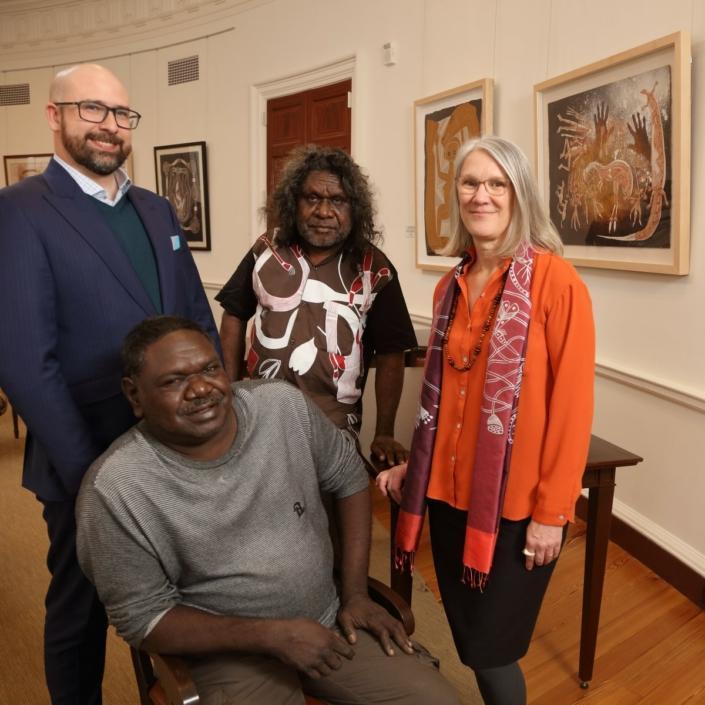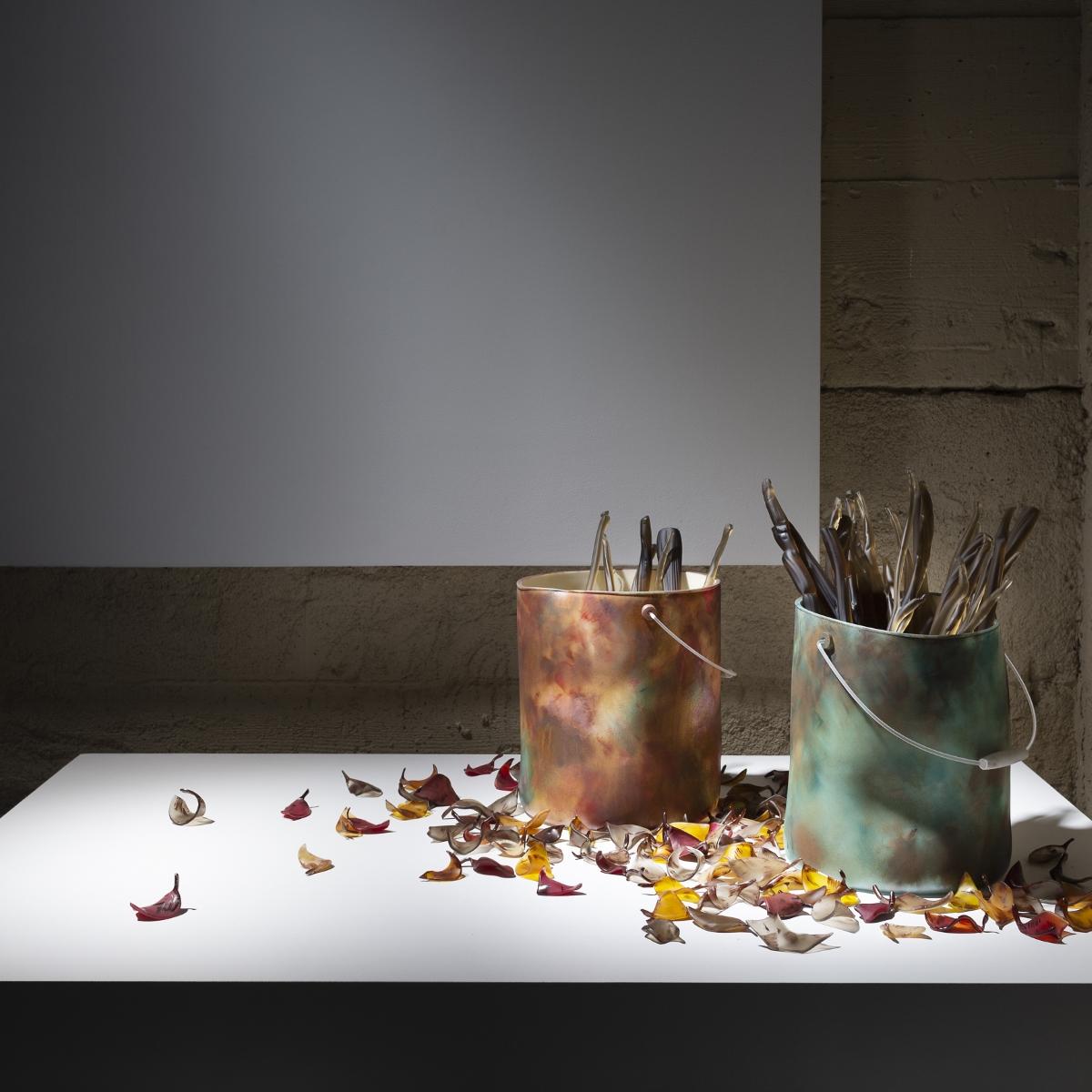Remarkable Collectors: Norman Rosenblatt
We recognise the significant contributions of these different private collectors.
Words: Duro Jovicic
Photography: Dean Schmideg & Mark Ashkanasy
Norman Rosenblatt, wearing his trademark black beret, greets me warmly and ushers me into his home. Upon entry, a 65-year art-collecting legacy is revealed. He began at the age of 14, wagging school to go to Leonard Joel’s art auction. Pieces from his collection recently featured at Melbourne’s Bayside Gallery in a show titled Eyes That See: the collection of Norman Rosenblatt, curated by Joanna Bosse.
On a wall near the landing, there’s a painting of his late uncle, art collector Joseph Brown, I ask: “Did he influence your collecting?” Rosenblatt looks at me incredulously, saying, “it’s like having a full forward from Collingwood in your team. Of course he did!” I comment on how the artwork, by Rick Amor, looks like it’s painted in the style of John Brack. “That was his teacher in art school!” he exclaims.
The piece depicting Brown is surrounded by eight paintings by Danila Vassilieff of his wife Elizabeth in 1947, their year of marriage. These pictures, capturing Vassilieff’s intense love for Elizabeth, were never for sale in his lifetime – yet decades later, Rosenblatt happened upon the first of the eight paintings in the series, titled Lisa with head on hand, in an art auction house. As the Vassilieff estate was auctioned off over time, he attained them all, discovering the last one at Leonard Joel years after the rest. It is apt that they surround the painting of Brown given his shared abiding love of the artist.
Fittingly, the paintings were included in the Bayside Gallery show. An unusual endeavour given they’re from a private collection, yet Bosse wanted to highlight the pivotal role private collectors play in the engagement with art and artists, and how they become beloved companions for life. The move was validated by the outpouring of support and positive responses by the public and critics alike.
As we make our way through Rosenblatt’s house, he points out a 1951 Grahame King abstract, saying, “this was done a year before Blue Poles, and if you didn’t recognise the name on it, you would think it’s an early Pollock…. art is not the language of Australia; it is the language of the world”. Rosenblatt is adamant that the early abstract works of Australian artists in the 1950s are comparable to those on the global scale. Who am I to disagree?
Arts Project Australia artists Bill Luke, Alan Constable, and Chris Mason are interspersed in his collection, and Rosenblatt’s passion flares up. “These aren’t outsider artists,” he says, “they are artists. Arts Project Australia is one of the great studios of the world for this art.”
His conviction is understandable, given his long-term support of this initiative. Rosenblatt, in conjunction with Bosse, ensured that the Arts Project Australia artists were represented at the Eyes That See show. He believes that the Western art world is obsessed with who signed something when really, great art is great art, irrespective of the artist behind it.
We stop to admire Amor’s 1997 painting The Waiter, a seminal work in his oeuvre, one that Rosenblatt saw at Niagara Galleries, Melbourne and asked director Bill Nuttall if he could take it home for his wife Robin’s opinion. Her response was an unequivocal “that’s not leaving the house Norman.” I ask about his selection method, and he says, “I must have a palpitation. It needs to be a cupid’s arrow and if it does not do that it doesn’t work.” Rosenblatt’s adoration and enthusiasm for the arts appears to be as fresh and arresting as when he started out, which is reflected in his philosophy that, “I always have my L plates on when it comes to the arts; every day we learn.”
When probed about his intentions for the collection, Rosenblatt is quick to respond: “I hope I am teaching people to open their eyes. For me it is about falling in love with something.” Rosenblatt holds the belief that art is never truly owned by you, and is always on loan.
While leaving this visual oasis, I reflect on Dolly Parton’s words, “what people do behind closed doors is certainly not my concern unless I’m there with them”. Anyone who enters the Rosenblatt world can’t help but leave with an enlightened view of the power of art, through their passion and generosity, in sharing the stories behind the art on their walls.
Image: Norman Rosenblatt at Bayside Gallery, installation view of Eyes that see: the collection of Norman Rosenblatt 2022. Courtesy: Dean Schmideg and Norman Rosenblatt.
This article was originally published in Art Collector issue 103, January to March 2023.

